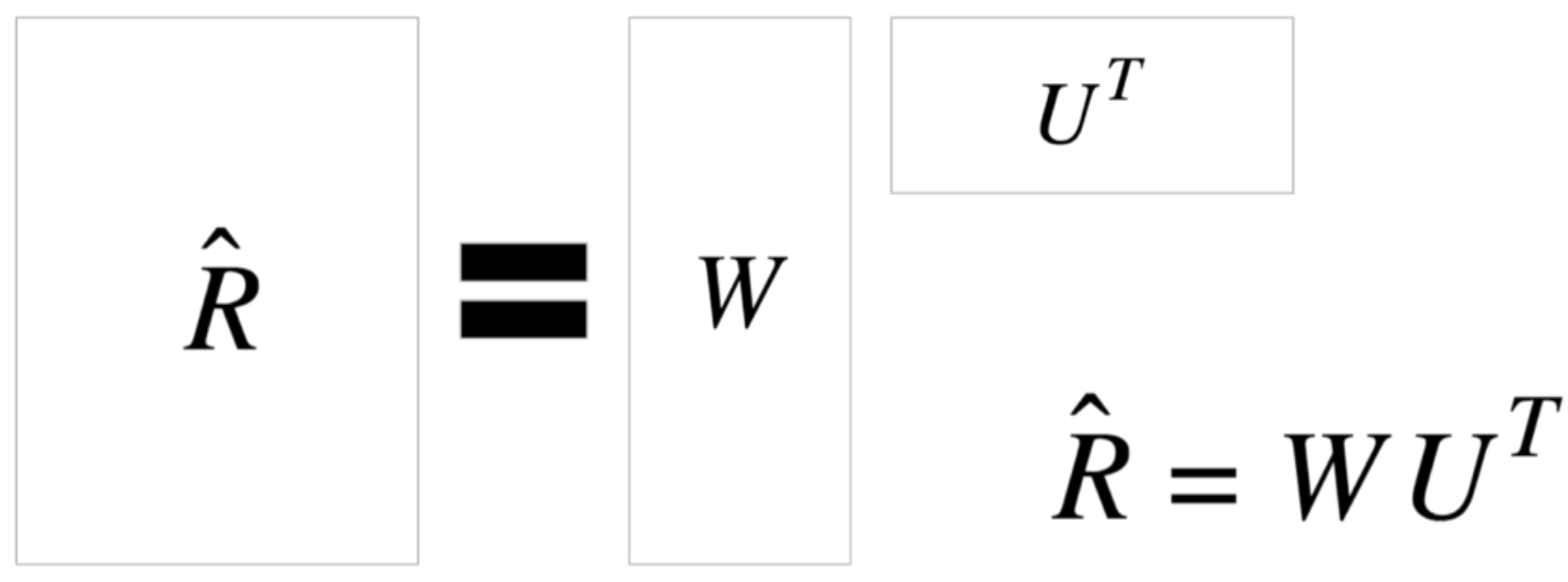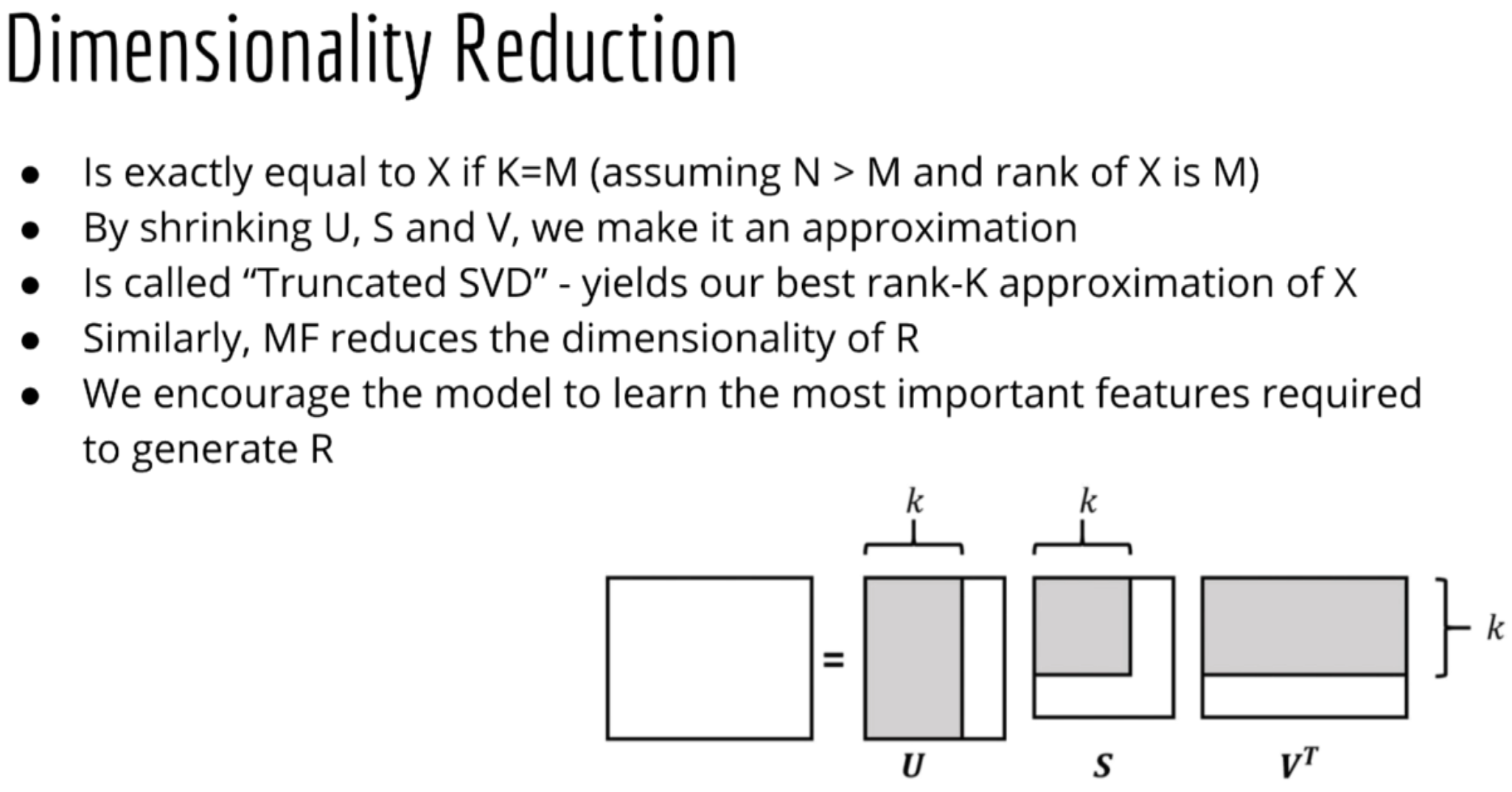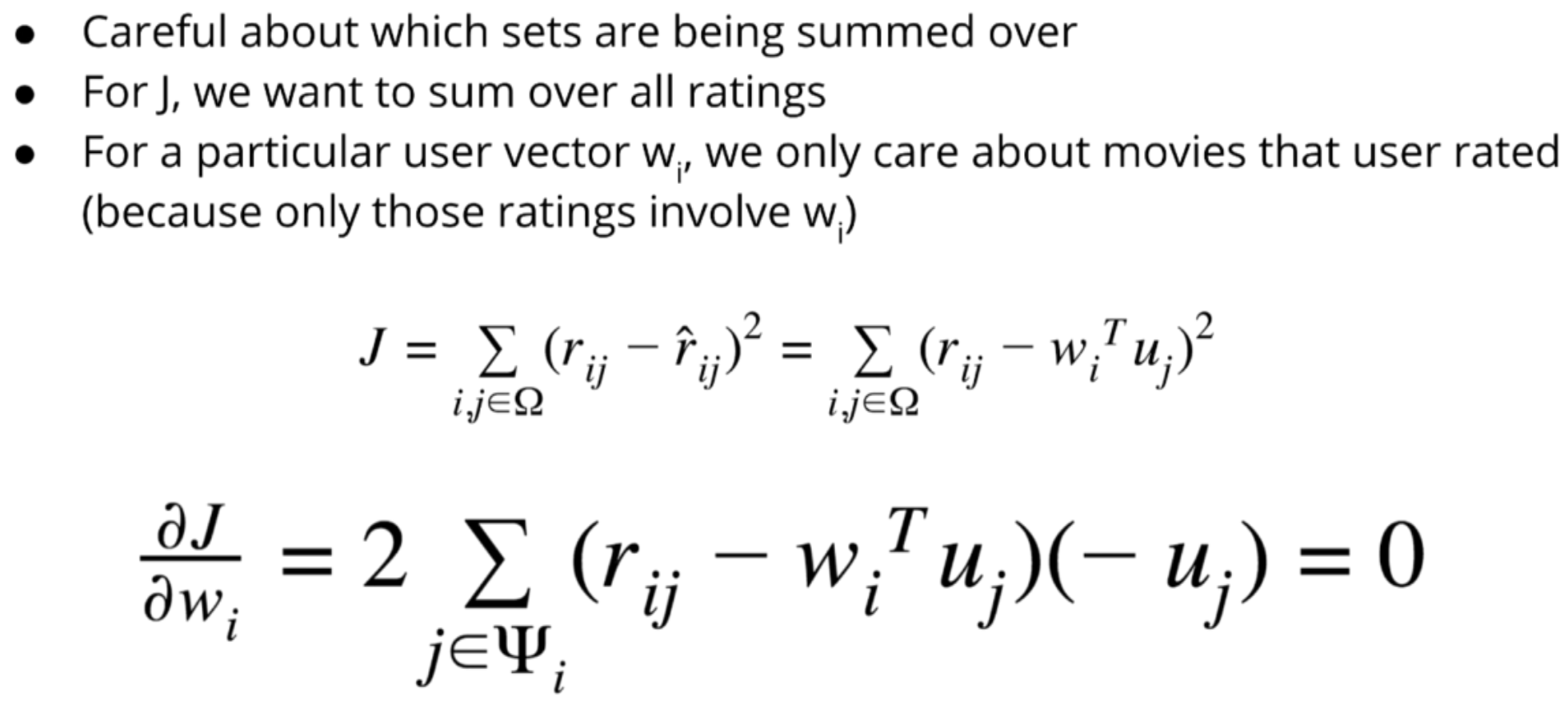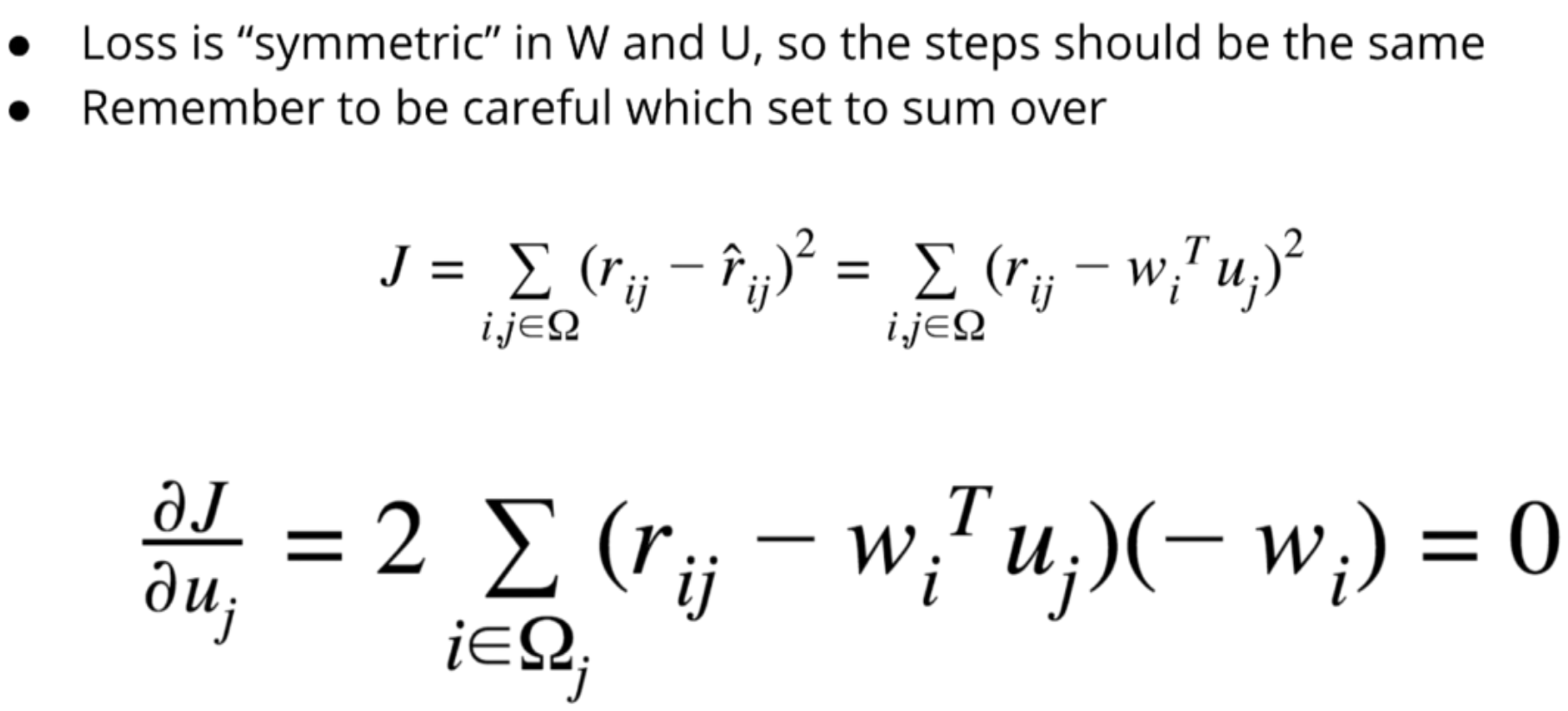Matrix Factorization
The user-item, or ratings matrix is N * M, where N is the number of users and M is the number of items.
Rethink about R
- Key: W and U should be much smaller than R
- Actually, we can’t stored R in our memory since it too large.
- But we can represent it using a special data structure: Dict{(u,m) -> r}
- If N = 120K, M = 26K
- N * M = 3.38 billion
- # ratings = 20 million
- Space used: 20 million / 3.38 billion = 0.006
- This is called a “Sparse representation”
Matrix Factorization
Matrix factorization is to split the matrix into the product of 2 other matrix.
We call it “R hat” because it only approximates R - it is our model of R. The formula is shown below:

So we would like W and U to be very skinny:
- W (N * K): the users matrix
- U (M*K):the movies matrix
- K:somewhere from 10-50
Some Calculations
if K = 10, N = 130K, M = 26K, then:
- W: 130K * 10 = 1.3 million
- U: 26K * 10 = 0.26 million
- Total size of W + U = 1.3 million + 0.26 million = 1.56 million
- How much saving: 1.56 million / 3.38 billion = 0.0005
This is good, we like # parameters < # of data points.
In practice, we don’t calculate the WU^T which makes the result R (N * M) unless in a small subset of data.
Actually, we often calculate one rating like the score of user i rating item j. It just a dot product between 2 vectors of size K:
Why does it make sense
Singular Value Decomposition also known as SVD is a matrix X can be decomposed into 3 separate matrices multiplied together:
Where:
- X (N * M), U (N * K), S (K * K), V (M * K)
- If I multiply U by S, I just get another N * K matrix:
- Then X is a product of 2 matrices, just like matrix factorization
- Or equivalently, I could combine S with V^T
- R (ratings matrix) is sparse
- If U, S, and V can properly approximate a full X matrix, then surely it can approximate a mostly empty R matrix!
- If U, S, and V can properly approximate a full X matrix, then surely it can approximate a mostly empty R matrix!
Interpretation
- Each of the K elements in w_i and u_j is a feature
- Let’s suppose K = 5, and they are:
- Action / adventure
- Comedy
- Romance
- Horror
- Animation
- w_i[1] is how much user i likes action
- w_i[2] is how much user i likes comedy, etc
- u_j[1] is how much movie_j contains action
- u_j[2] is how much movie_j contains comedy, etc
The w_i^Tu_j means how well do user i’s preferences correlate with movie j’s attributes:
Actually, each features is latent, and K is the latent dimensionality, a.K.A “Hidden causes”. We don’t know the meaning of any feature without inspecting it.
Dimensionality Reduction
MF reduces the dimensionality of R.

How to Learn W nad U
Loss Function
Using the squared error loss as the loss function:
Omega = set of pairs (i,j) where user i rated movie j.
Solving for W

Try to isolate w_i, it’s stuck inside a dot product:
Dot product is commutative:
The result of dot product is a scalar, so scalar * vector = vector * scalar:
Drop the brackets:
Summation doesn’t actually depend on i, so add more brackets:
Now it’s just Ax=b, which we know how to solve:
x = np.linalg.solve(A, b)
Solving for U

Note: Cover Picture
